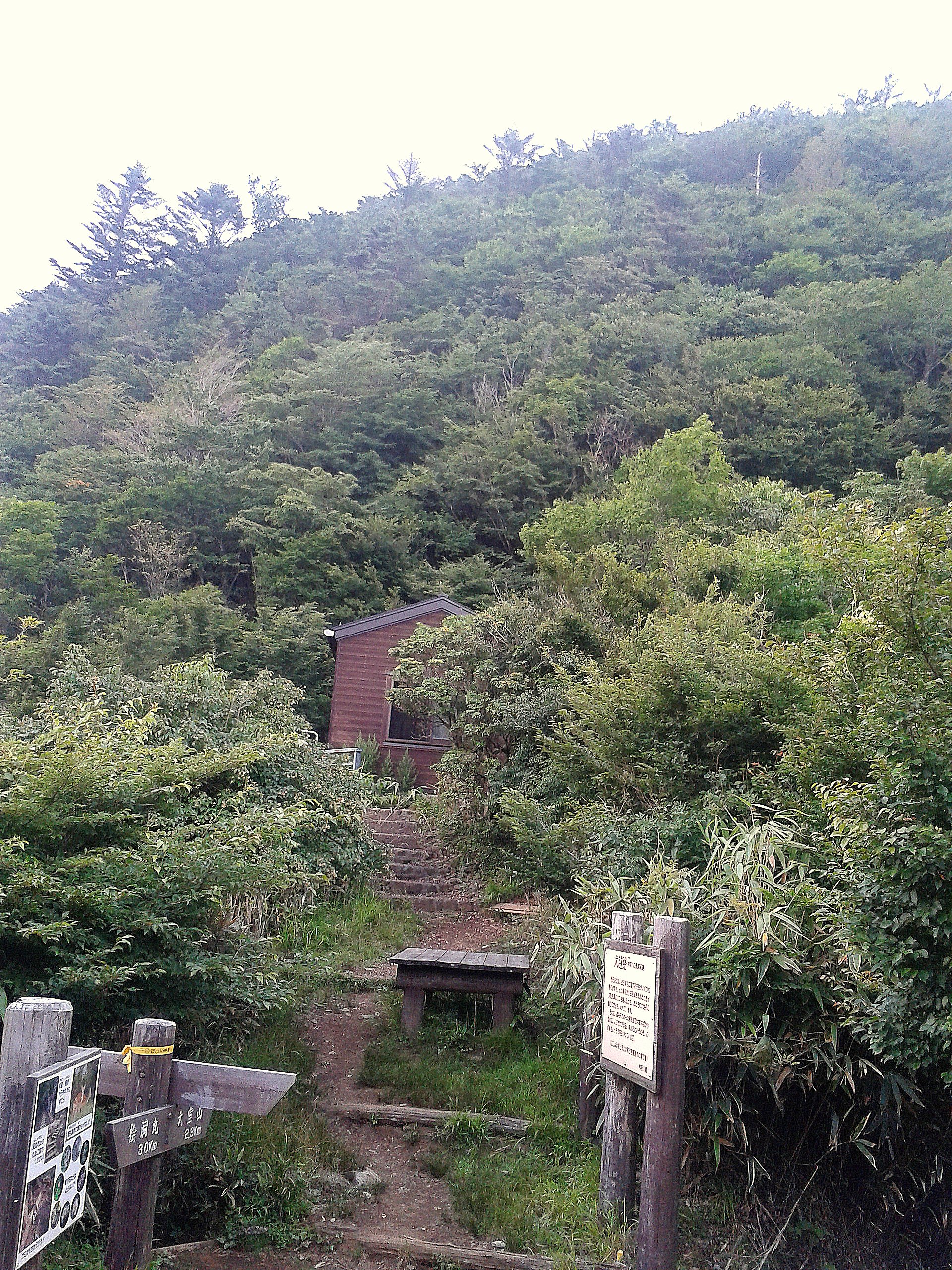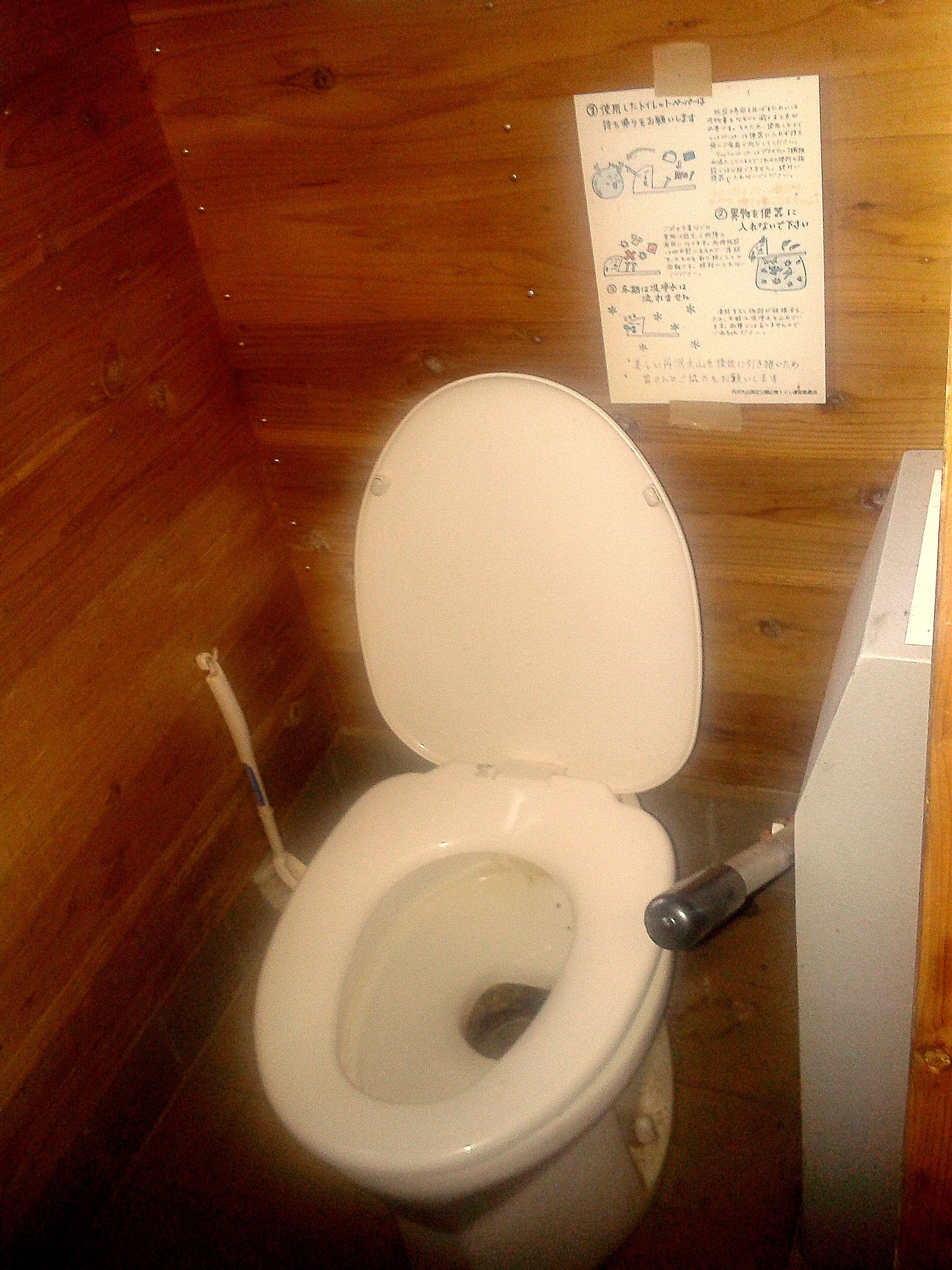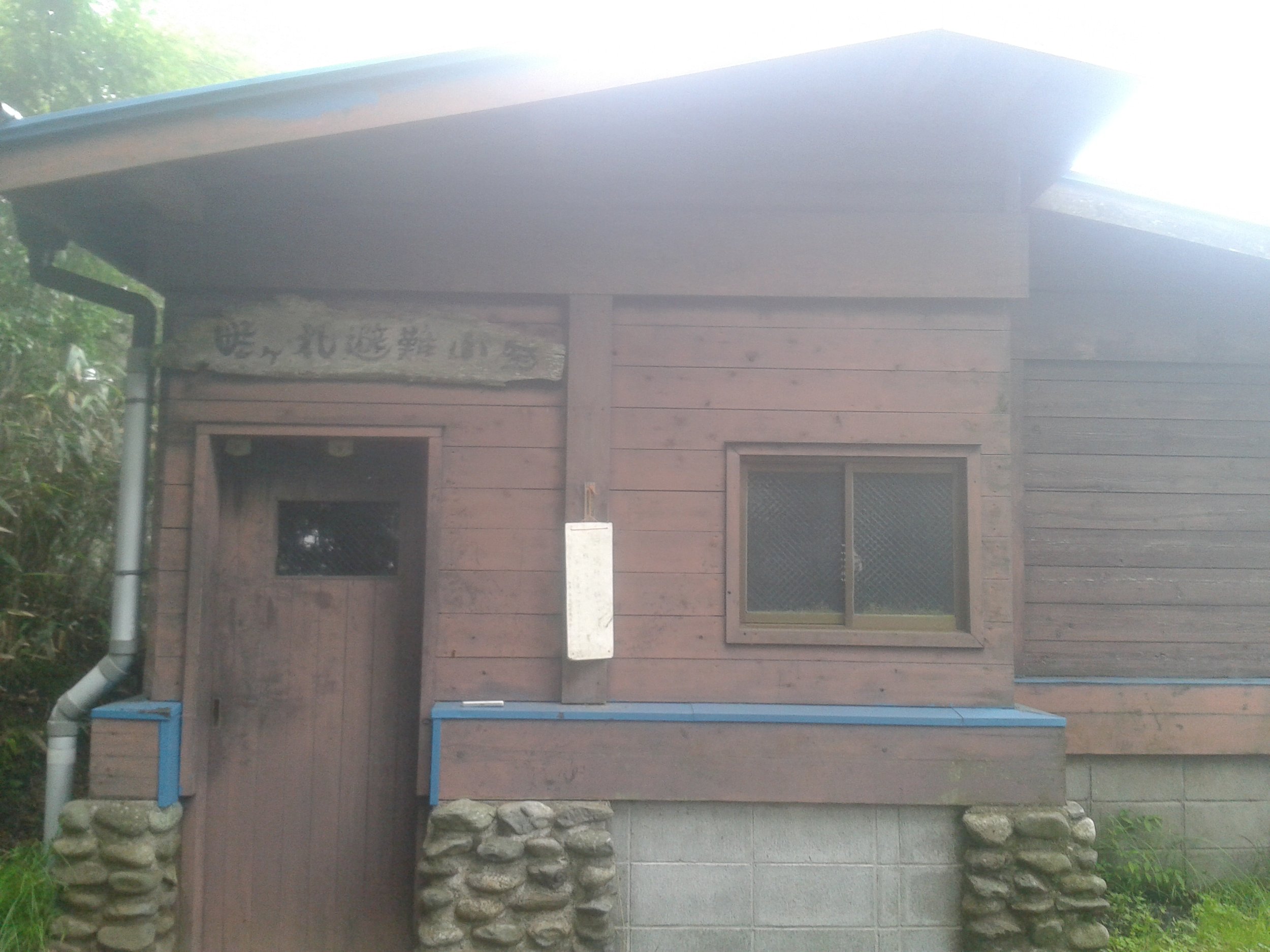Shelters in Japan
This is Part 3 in a series on long distance hiking in Japan on the Tokaido Trail. Part 1 focused on planning and logistics and Part 2 on the experience of hiking the trail. Part 3 talked about trail quality and maintenance.
Despite restrictions on camping along the Tokaido Trail, I stumbled upon many shelters on my route. Himangoya, or Emergency Huts, are fully furnished four-sided buildings where hikers can take refuge overnight or during inclement weather. Since the trail and its huts are managed by local government and volunteer groups, some prefectures (Japan’s version of states) had huts along the trail every 5 miles or so and in some areas, there were no huts.
The outside of a 4-sided hut with a wooden sliding door.
All the huts I saw had toilets connected to the shelter building; some had flushing toilets. However, it is useful for Westerners to know that although all the huts have attached toilet rooms, beware as many are equipped with the (WARNING: Click on link at your own risk) much dreaded Japan-style toilet.
Usually, I only see flushing toilets in shelters near roads (Partnership shelter on the AT comes to mind). This shelter had a flushing toilet, but was very far from a road.
Some of the shelters have blankets and Japanese-style futons. Some had wood fired stoves. Every shelter I saw had glass windows.
Blankets and Japanese style-futons are available for all users–though I was happy to use my sleeping bag.
I was able to receive cell phone reception from many of the mountain peaks, and from a few of the shelters (which tended to be in more remote areas of the trail). Yet, in a country where I had assumed cell phone service covered every square inch a person could visit, it was surprising how easy it was to be completely wildly alone.
I had the huts to myself which made me feel like a Japanese mountain monk, but also was slightly creepy. Although I generally feel comfortable sleeping alone in Appalachian Trail shelters, there mist and relative remoteness of my shelter made it seem more eerie. Despite being completely protected on all four sides with a roof, the humid mistiness of the air deflated my down sleeping quilt and made it difficult to ascertain whether I was hot or cold.
Some shelters have wood burning stoves to keep off the chill, especially for winter mountain visitors. An elaborate rope system allows hikers to dry their wet clothes overnight
Some aspects of the shelter system reminded me of shelters along the AT: the elaborate rope systems to allow hikers to dry their gear overnight, the hooks to hang food away from mice, the brooms to sweep out trail dirt. Yet everything seemed much cleanlier and more permanent than an AT shelter. Some of the amenities, like blankets and Japanese-style futons (like movable mattresses), seemed unnecessary. Some things I would consider necessary at a shelter, like a nearby source of water, were surprisingly uncommon.
This hut offers blankets but no futons.
Placed right at a misty wooded mountain pass, my favorite hut was made entirely of scented Japanese cedar and housed a beautiful wooden table and stump chairs. I suspect that a company could have charged $100 per night to stay in such a luxurious place.
Japanese cedar table and the framed rules of the hut
The hut and its surroundings were so beautiful that I decided to end my day a few hours before dark—quite out of habit for me—to enjoy the serene landscape.
The inside of some huts can be quite luxurious










